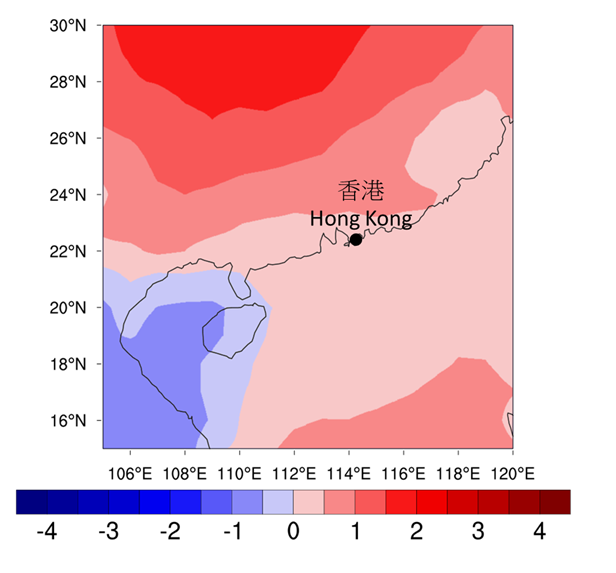Seasonal forecast for winter 2021/22
29 November 2021
In the past month or so, sea surface temperatures of the central and eastern equatorial Pacific continued to decrease and became below normal in October 2021. Based on the latest oceanic observations as well as forecasts by a number of climate models around the world, the central and eastern equatorial Pacific are expected to remain colder than normal during winter 2021/22 (December 2021 – February 2022). The situation is likely to develop into a short-lived La Niña event. Statistical analyses indicate that when La Niña occurs during wintertime, winter temperatures in Hong Kong generally tend to be lower than those during the ENSO-neutral state. On the other hand, under the influence of global warming and local urbanization, winter temperatures in Hong Kong show a significant long-term rising trend, partially counteracting the effect of La Niña. Taking all available information into consideration, including prediction from climate models around the world, the temperature in winter 2021/22 in Hong Kong is expected to be normal to above normal.Although the average winter temperature in Hong Kong is expected to be normal to above normal, day-to-day fluctuations in weather and temperature can still be quite large with occasional cold weather. It is expected that the number of cold days in winter 2021/22 would be close to that of previous winter. Please refer to the latest local weather forecast and 9-day weather forecast issued by the Hong Kong Observatory. Cold weather refers to temperature falling to 12℃ or below. On average, there are about 14 cold days per winter. During the last winter, there were 14 days of cold weather.
The impact of La Niña on winter rainfall in Hong Kong is not significant. The majority of climate models predict that the rainfall over southern China is likely to be normal to below normal in winter 2021/22.
The seasonal forecast for Hong Kong is available at this website.

Temperature forecast chart for the 2021/22 winter based on the average of a few global climate models. The unit of values displayed in the legend is standard deviation (σ). Blue is negative anomaly, indicating temperature below normal. Red is positive anomaly, indicating temperature above normal.